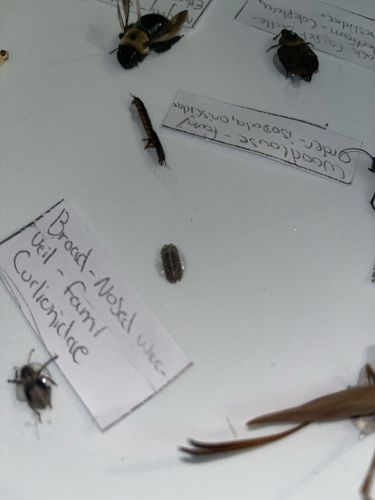Woodlouse
Scientific Name: Various species within Oniscidea
Order & Family: Order Isopoda, Suborder Oniscidea
Size: Typically 0.5 to 1.5 cm (0.2 to 0.6 inches) in length.

Natural Habitat
Damp, dark places such as under rocks, logs, leaf litter, and in soil; often found in gardens, forests, and basements.
Diet & Feeding
Detritivores, feeding primarily on decaying organic matter such as dead leaves, wood, and vegetables; they sometimes consume living plant matter when other food is scarce.
Behavior Patterns
Nocturnal, hiding during the day to avoid predators and desiccation. They are known for their 'rolling up' defense mechanism (conglobation) into a ball when threatened, especially species like pill bugs. They require moist environments for survival.
Risks & Benefits
Generally beneficial as they aid in decomposition and nutrient cycling in ecosystems. They are not known to be harmful to humans, cause stings or bites, or transmit diseases. In large numbers, they can occasionally become a minor nuisance in damp indoor environments, but rarely cause significant damage.
Identified on: 9/22/2025